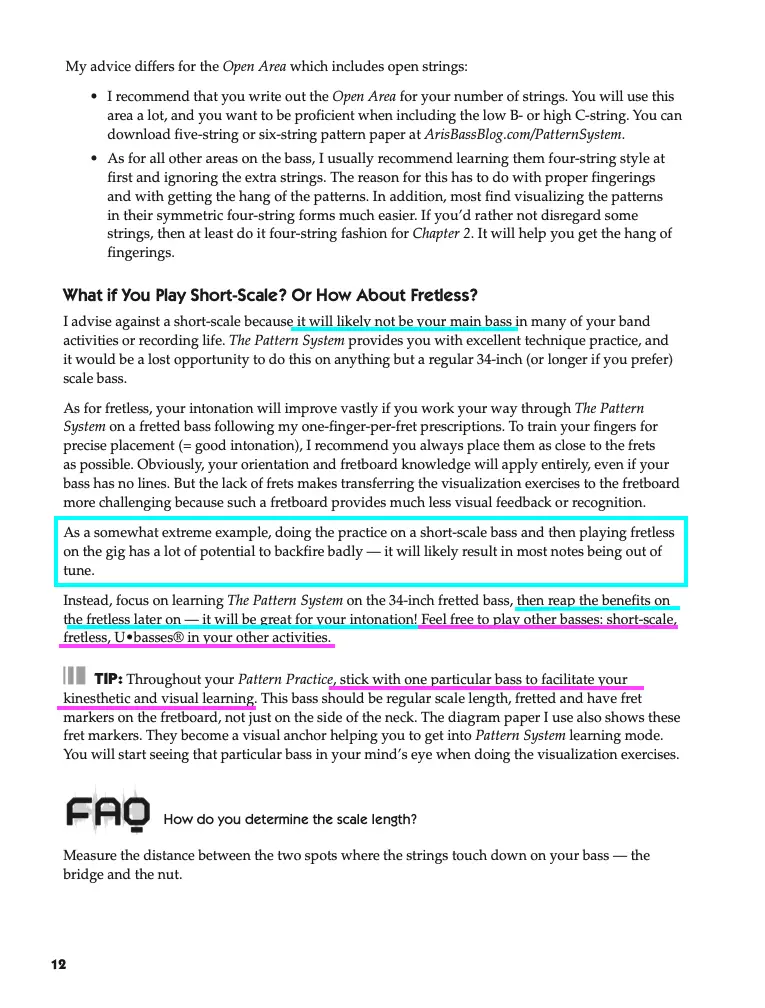Anyone who knows me knows I love little critters. Shorties of any kind. And yes that includes short scale basses. I say no such thing as they claim.
What they said I said – versus what I actually said
What I allegedly said:

You be the judge, am I saying above that playing short-scale is a waste of time? Not even close. Matter of fact, I went through my entire book file and searched these words: “waste of time”. No result. Hm… Did YB Normal read the same book?
The Pattern System works with any type of bass! We have many students and Practice Group Participants who play exclusively fretless or exclusively short-scale or ukulele basses.
However what I vehemently advise against – and for obvious reasons is:
Switching from one bass to another while you are becoming proficient with the pattern System.
YB Normal really just needs to re-read page 12 a lot closer to understand what I actually said before spouting off such an unwarranted and untrue public comment!
If you are just a couple of drills into this system you will understand why.
Here are a few reasons:
- You will learn to play without looking
- The way we do the drills will improve your tone (and that is intimately tied to distances)
- You will work with visualization
- You will work with kinesthetics (feeling the patterns under your fingers without the bass)
- You will work on feeling the notes
- Sometimes you will say scale degrees or note names out loud
- The above gives you some of the core skills you want to have when learning to read
Practicing a one-finger-per-fret approach (even though there are many situations where it is totally fine to deviate from it!) trains you in a systematic approach that’s easy to understand and apply consistently while working on the Pattern System.
Further the acquired agility and approach to fingering will make reading music easier (one less thing to worry about!), allowing for faster & cleaner scale runs of all sorts. And clean fingering will improve your tone.
So, it’s a missed opportunity if you practice patterns at one scale length on Monday and on a different one on Tuesday. You are missing the opportunity to precisely train your micro movements that seemingly magically allow you to place your fingers with the precision of a fraction of a millimeter – repeatedly and consistently.
Stick with one (kind of) instrument until you are good at the system itself. At that point, it can be transferred to any instrument – fretboard or not, even upright with adjusted fingering.
So to be clear and for the record – I never said that short-scale basses are a waste of time.
In fact, I enthusiastically endorse Kala UBasses that have a 20-inch scale length, play a soprano Marleaux, and have had several shorties over the years.
Lastly, in the professional world you may be asked to play an axe that is different from your preferred one. You won’t have any trouble switching from 34″ to 32″. But not so much the other way round. So if you don’t foresee yourself being in a recording studio where the producer hands you a 34″ Fender, then have at it with your preferred short-scale axe.
Just stick with it during pattern practice!
And yes, bring on the kittens. We have three of them and they love our short scale basses!

Pebbles
What I actually said

You might also enjoy:
Short Scale Shedding


